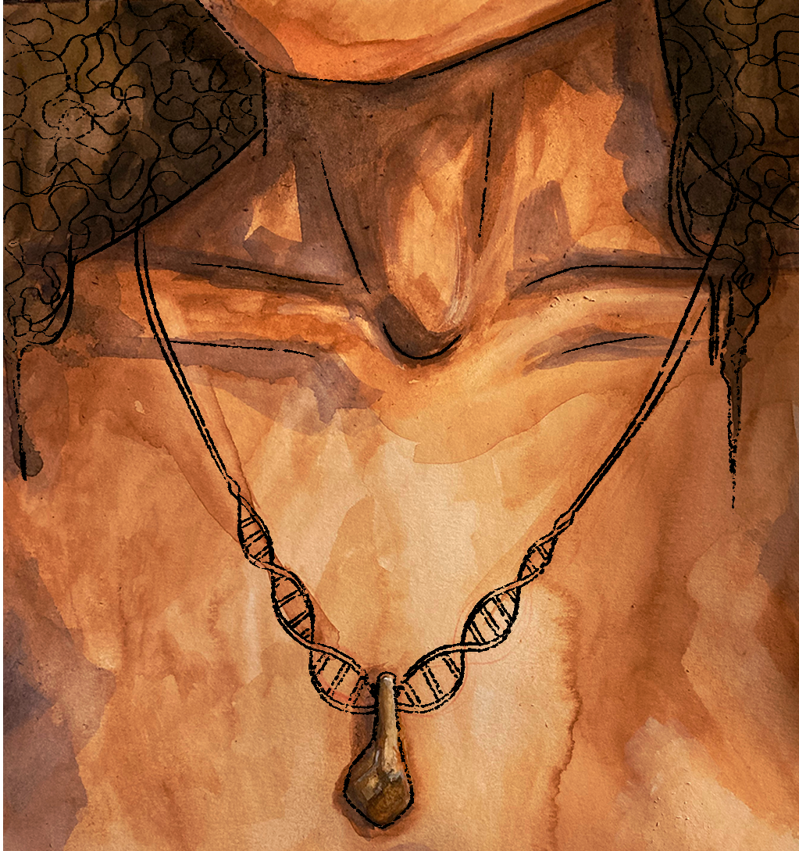Everyday objects from the Palaeolithic that have survived to this day are very scarce. Made of stone, bones or teeth, they provide fundamental information about the subsistence strategies of our ancestors, their behavior and their culture. This scarcity of material remains complicates the work of scientists who study the social organization and way of life of prehistoric societies; Issues such as the division of labor or the social functions of people who lived during this period are especially difficult to establish in the absence of evidence.
In addition, until now it has been difficult to relate these objects found in caves or rock shelters to specific individuals. That is why it is crucial to develop new methods that allow extracting the greatest amount of information from each finding. On Tuesday, an international team, led by researchers from the Max Planck Institute for Evolutionary Anthropology in Leipzig, has developed a novel method to isolate DNA from bones and teeth, which allows to directly identify the individuals who carried the objects and thus deepen the knowledge of Palaeolithic societies. Details of this new technique, which does not destroy samples, are published in the latest issue of the journal Nature.
The scientists focused specifically on artifacts made from bones that, while rarer than stone tools, are also more porous and more likely to retain DNA present in skin cells, sweat and other body fluids. "The surface structure of bone and dental objects provides important information about their manufacture and use," says Marie Soressi, an archaeologist at Leiden University in Germany who led the work with Matthias Meyer, a geneticist at Max Planck. "That's why preserving its integrity, including its surface microstructures, is so important."
Recreation of a woman wearing the pendantInst. Max Planck Evolutionary Anthropology
Before they could apply their method properly, the team had to make sure the precious objects were not damaged. They tested the influence of various chemical substances on the surface structure of bone and dental archaeological pieces and developed a non-destructive method based on the use of phosphate; By washing the objects at temperatures up to 90°C they were able to extract DNA from the wash waters, keeping them intact.
Once tested, the next step was to find the right material remains. They applied the method for the first time to a set of objects from the French cave of Quinçay, near Poitiers, excavated between the seventies and nineties. In some it was possible to identify DNA from the animals from which the bones from which they had been made came, but the vast majority of the DNA detected came from modern manipulations, carried out during or after the excavation.
Find out more
GENETICS.
The romances between 'Sapiens' and Denisovans
- Writing: TERESA GUERRERO Madrid
The romances between 'Sapiens' and Denisovans
Palaeontology.
DNA shows for the first time what a Neanderthal family looked like
- Writing: AMADO HERRERO
DNA shows for the first time what a Neanderthal family looked like
To overcome that problem of contamination, the researchers focused on recently excavated material, with gloves and masks and plastic bags. Three dental pendants from Bulgaria's Bacho Kiro Cave – a site home to Europe's oldest modern humans – showed significantly lower levels of modern DNA contamination. However, in that case no ancient human DNA could be identified from the samples.
Denisova Cave
The definitive breakthrough was made possible by two Russian researchers, Maxim Kozlikin and Michael Shunkov, who excavated the famous Denisova Cave (Russia) in 2019. They recovered a pendant made from a deer tooth from the Upper Palaeolithic with a protocol that allowed to keep the object free of contamination. From it, Leipzig geneticists isolated not only the DNA of the animal itself, a Wapiti deer (Cervus canadensis), but also large amounts of genetic information from the cave inhabitants.
Using the mitochondrial genomes of the wapiti and the human being, they were able to estimate the age of the pendant, which they placed between 19,000 and 25,000 years ago, without the need to take other samples for carbon 14 dating. And based on analysis of human mitochondrial DNA (which is inherited exclusively from the mother), the researchers concluded that most of the DNA likely came from a single individual. But in addition to mitochondrial, they also recovered a significant fraction of human nuclear DNA, which is transmitted along both lines and allows more information to be collected.
Based on the number of X chromosomes, they determined that the pendant had been manufactured, worn or worn by a woman; they also discovered that this person was genetically closely related to contemporary Siberian individuals, whose skeletal remains had been previously identified. This is an ancestral genetic group known as Ancient North Asians (ANE).
Inst. Max Planck Evolutionary Anthropology
The team now hopes to apply their method to other objects made from Paleolithic bones and teeth to better understand the genetic ancestry, sex and other characteristics of the people who made, used and wore them. "Forensics will not be surprised that human DNA can be isolated from an object that has been manipulated so much," says Matthias Meyer, "which is amazing that it is still possible after 20,000 years."
According to the criteria of The Trust Project
Learn more

